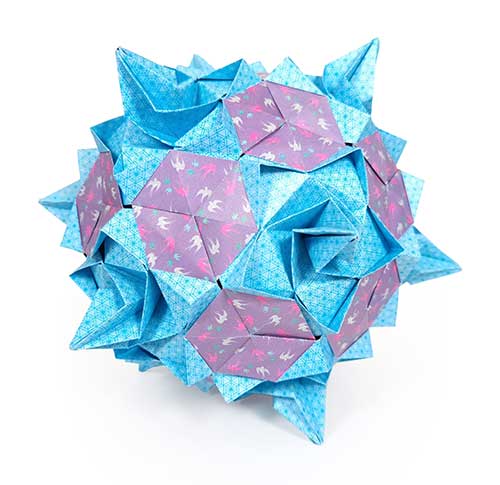More creation than preparation, it was discovered that using MC to bind two sheets of normally weak tissue paper together increases their tensile strength dramatically, all while preserving the miniscule GSM of the paper. This is the preferred paper of many advanced folders due to how easy tissue paper is to find and how many colours it comes in.

Suitable Paper
Tissue paper of course, also called crepe paper in Japan (crepe means something different in Australia). Other paper can be combined with tissue paper using this technique, but if the paper has a greater size change when wet than the tissue paper, then the tissue is likely to tear when drying.
Equipment Required
- Methyl cellulose – Purchasable in powder form from book binding websites and similar craft stores.
- 2 sheets of tissue paper.
- A large flat surface such as a pane of glass or mirror. It doesn’t have to be glass, but it must be completely flat and must not be porous. Any dimpling on the surface will impede the process. If you’re not sure, test it with a small piece of paper first.
- A soft-bristled paint brush or paint roller – we recommend that you not use spongy brushes/rollers since they have a habit of tearing paper by creating too much surface tension.
- 2 cardboard rolls wider than your chosen paper – the wider the diameter the better. Postal rolls about 10 cm in diameter are great.
Technique
- Complete the first 6 steps of the MC technique. This will leave you with a single piece of tissue paper on your flat surface. The only difference is that you should not spend as long working on wrinkles and bubbles on the first laid sheet so as not to allow the paper to expand much before placing the second sheet.
- Do your best to line up the edge of the second sheet with the edge of the first, and using the same technique, roll the second sheet of tissue onto the first. The MC placed on the first sheet will cause them to stick together.
- Place another layer of MC on top of the second sheet, as per step 6 of the MC tutorial. It is now time to work on removing bubbles and wrinkles. If you were expedient, both sheets should be roughly the same size. As the MC seeps into them, they will grow at similar rates and adhere better.
The same troubleshooting tips for MC preparation apply here, although single and double tissue are exceedingly good at tearing at the gentlest touch. To avoid disappointment, practice placing the paper rather than the touch-up techniques. Some pieces just cannot be saved! Tissue paper is cheap, do not be afraid to bin a failure.
